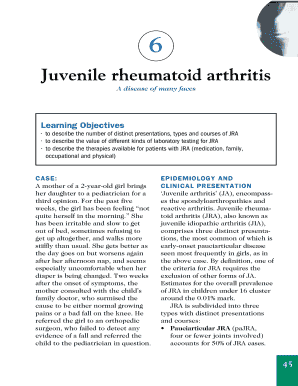

However, in routine clinical practice the use of both RF and ACPA remains, and for good reason: the presence of RF and ACPA in healthy individuals increases the risk of RA development over and above ACPA alone, and a positive RF and ACPA confers a far poorer radiological prognosis in established RA compared to either of these autoantibodies alone.
#Rheumatoid factor quant code#
Over the last 2 decades, smoking, HLA-DRB1 alleles that code a “shared epitope” (SE), and anti-citrullinated protein antibodies (ACPA) have emerged as the trinity of RA pathogenesis. The funders had no role in study design, data collection and analysis, decision to publish, or preparation of the manuscript.Ĭompeting interests: The authors have declared that no competing interests exist. Email: Tel 01872256422 This work was funded by the the Cornwall Arthritis Trust, a registered charity, and by the Haywood Rheumatism Research and Development Foundation. Nick Morley, Research Manager at Royal Cornwall Hospitals Trust. This is an open access article distributed under the terms of the Creative Commons Attribution License, which permits unrestricted use, distribution, and reproduction in any medium, provided the original author and source are credited.ĭata Availability: Due to ethical restrictions, some data cannot be made available publicly, data are available on application to the Royal Cornwall Hospitals Trust R&D department as Sponsor, responsible for Institutional Data Access, for researchers who meet the criteria for access to confidential data. Received: JanuAccepted: JPublished: July 14, 2017Ĭopyright: © 2017 Murphy et al. Wallace, University of Birmingham, UNITED KINGDOM

Little or no relationship was observed in patients lacking SE.Ĭitation: Murphy D, Mattey D, Hutchinson D (2017) Anti-citrullinated protein antibody positive rheumatoid arthritis is primarily determined by rheumatoid factor titre and the shared epitope rather than smoking per se.

In cohort 2, ACPA positivity rates significantly increased with RF positivity and carriage of 1 or 2 SE alleles (p<0.01). In cohort 1 there was a trend (p20 pack years conferred an increased risk of anti-CCP positive RA (158/200 (79%)), compared to having never smoked (146/235 (62%), p = <0.01), but this increased risk correlated with smokers’ RF positivity as the principal determinant on subsequent regression analysis of cohort 2.


 0 kommentar(er)
0 kommentar(er)
